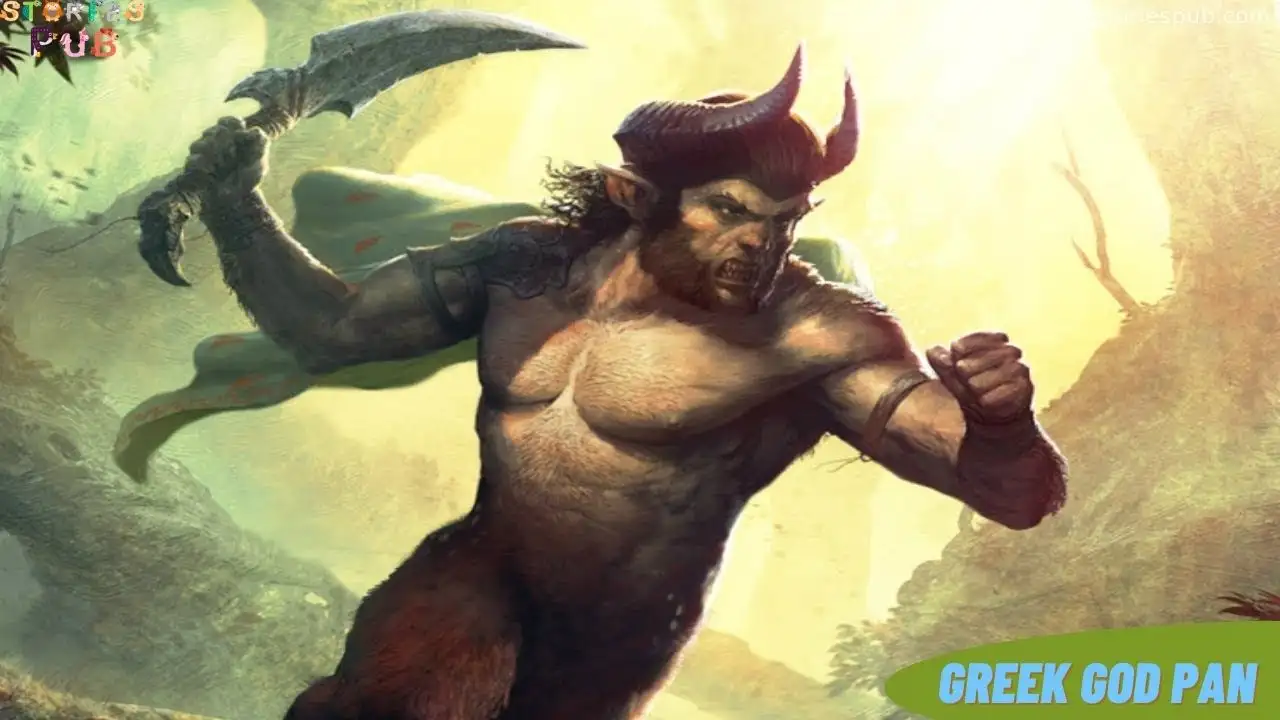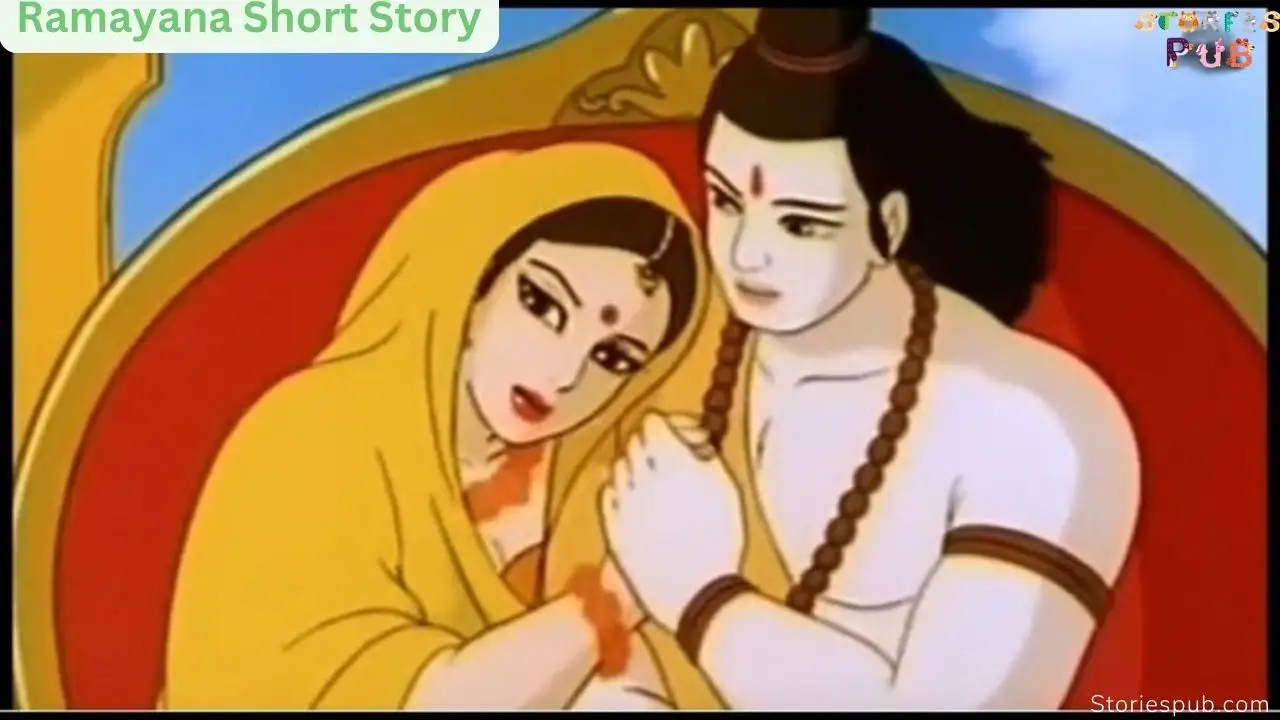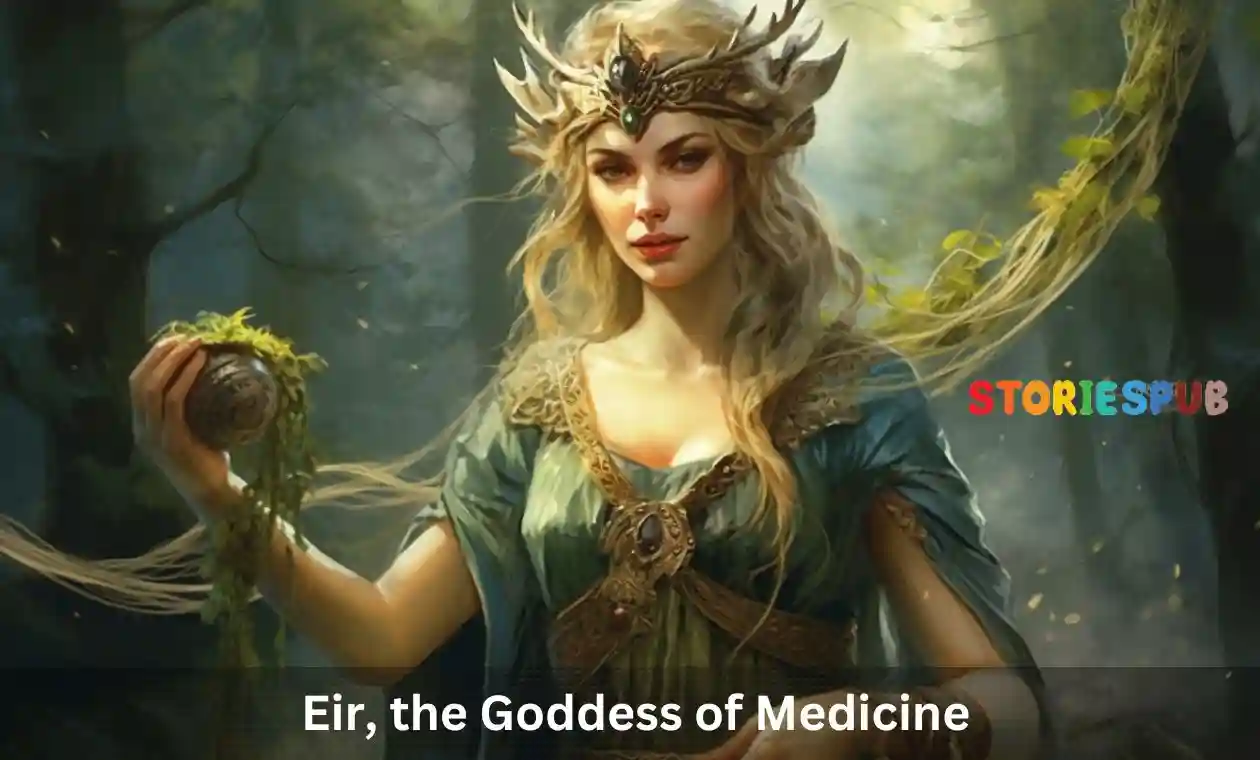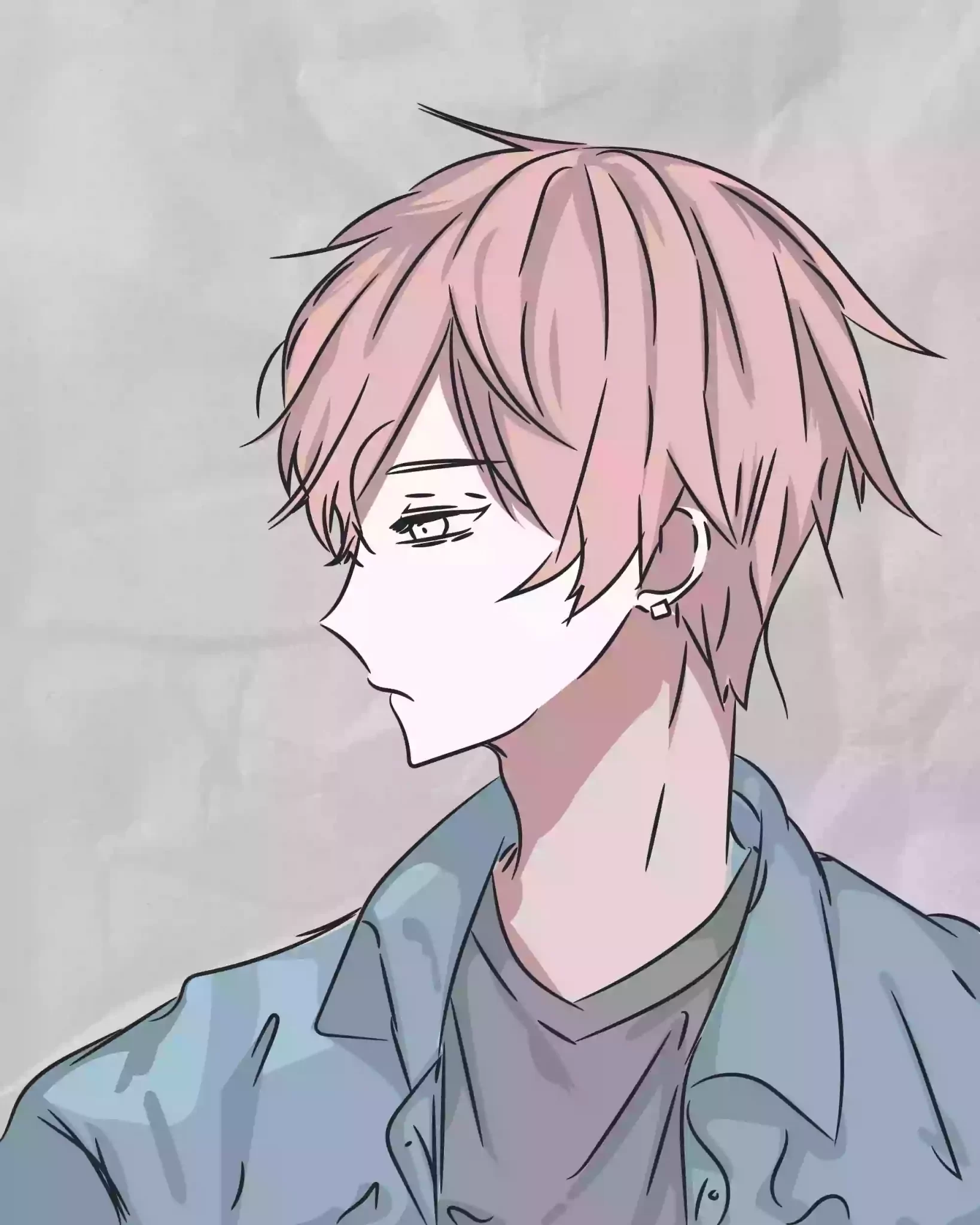Anubis: Unveiling the Mysteries of Egypt’s God of the Dead
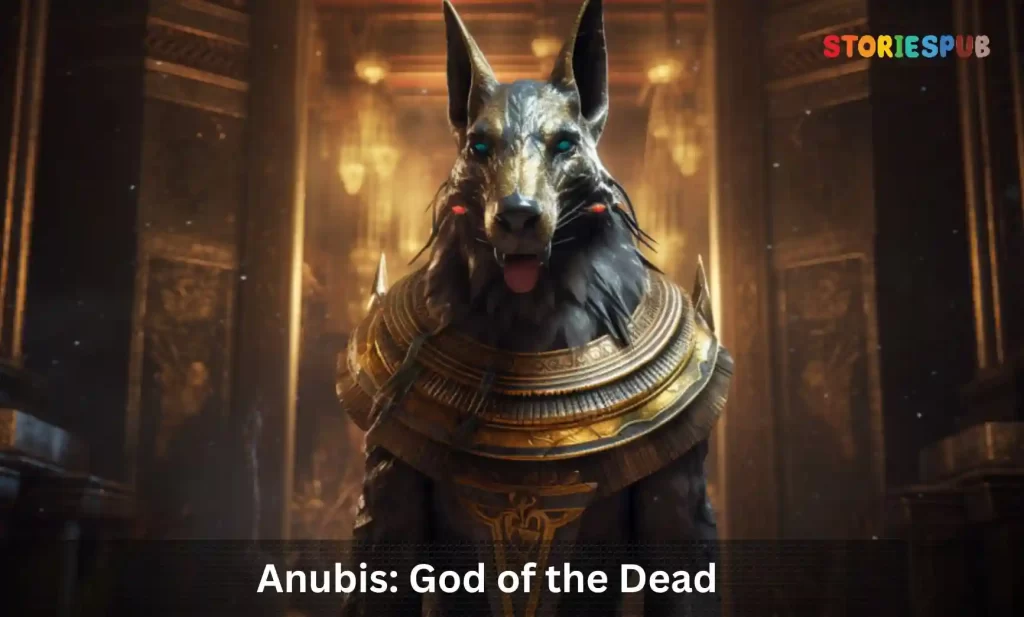
Introduction
Ancient Egyptian mythology is one of the most complex and elaborate mythologies in the world. It is a rich tapestry of stories, gods, goddesses, and religious beliefs that have intrigued people for centuries.
The Egyptians believed in a pantheon of gods who controlled every aspect of their lives. Among the most important of these gods was Anubis.
Brief history of Ancient Egyptian mythology
The history of Ancient Egyptian mythology dates back to around 4000 B.C. when they began to develop their own unique culture. Their religion was based on a complex pantheon of gods and goddesses who played an integral role in every aspect of life – from farming to birth and death. The Egyptians believed that each god represented a different element or force in nature, and they would often depict them as human-animal hybrids or with animal heads to represent those qualities.
They also believed that each person had a ka (soul) that was essential for survival after death. Throughout its history, Ancient Egypt underwent many changes – from unification under one Pharaoh to periods of war and foreign rule – but their religion remained constant throughout it all.
Overview of Anubis and his significance in Egyptian mythology
Anubis was one of the most significant deities in Ancient Egyptian mythology due to his role as the god of mummification and the afterlife. He had the head of a jackal or dog-like creature, which symbolized his connection with death and funeral rites. According to tradition, Anubis assisted Osiris (the god associated with resurrection) during the weighing-of-the-heart ceremony where he would weigh each person’s heart against Ma’at’s feather (the symbol for truth).
If a person’s heart was lighter than Ma’at’s feather, they were allowed into the afterlife; if it was heavier, they were devoured by Ammit, the devourer of souls. Anubis was also responsible for embalming and mummifying the dead.
He was believed to have helped wrap the body in linen bandages and place amulets in strategic locations to protect the deceased from harm. The process of mummification was seen as essential to the proper passing into the afterlife, which is why Anubis’ role in this process was so crucial.
Anubis played an integral role in Ancient Egyptian mythology as the god of death and mummification. His role in ensuring that people made it safely into the afterlife made him one of the most important deities in their complex pantheon of gods and goddesses.
Anubis’ Origins and Role in the Afterlife
Mythological Origins of Anubis
Anubis is one of the most ancient and intriguing gods of Egyptian mythology, with a history that predates the pharaohs. He is believed to have originated in Upper Egypt during the Predynastic Period as a god of fertility and agriculture.
However, as time went on, his role evolved into that of a god associated with death and the afterlife. Anubis was considered part of a group of gods known as “funerary deities,” who were responsible for guiding the souls of the deceased through their journey in the afterlife.
Anubis’ Role as The God of Mummification & The Afterlife
Anubis was primarily associated with mummification, which was a sacred practice in Ancient Egypt. It was believed that by preserving and preparing the body for burial, it would be able to house the soul in its journey through the afterlife. As such, Anubis had significant importance in Egyptian culture.
He not only oversaw this important process but also determined whether or not individuals were worthy enough to enter into paradise. Anubis played various roles throughout his reign as god presiding over death and eternity.
In addition to mummification rites, he also acted as judge during what is known today as ‘The Judgment Hall’. Here individuals would stand trial for their actions on earth while alive before him and other divine beings such as Osiris (God Of The Dead) who sit upon judgement thrones besides him.
The Weighing Of The Heart Ceremony
One of Anubis’ most notable contributions to Ancient Egyptian mythology is his introduction into ‘The Weighing Of The Heart Ceremony.’ This ceremony involved placing an individual’s heart on one side of scales while a Maat feather was placed on the other side. The ceremony was conducted to determine whether or not the individual in question had lived a good and just life.
If they had, their heart would weigh less than the feather, allowing them passage into paradise. If their heart weighed more than the feather, they would be devoured by Ammit, a demon-like creature who consumed those deemed unworthy.
Overall, Anubis’ role in Egyptian mythology is one of immense importance and significance. He served as an integral part of Ancient Egyptian culture and religion by presiding over death rites, mummification practices and determining whether or not individuals were worthy enough to enter into eternity.
Depictions of Anubis in Art and Architecture
Iconography and Symbolism associated with Anubis
Anubis was generally depicted with the head of a jackal or a dog. This iconography is attributed to the fact that jackals were often seen prowling around graveyards and hunting for food among the tombs.
In many depictions, Anubis was shown as a muscular man with the head of a jackal, wearing a ribbon or collar around his neck. The ribbon is believed to represent one of two things – either the leash that would have been used to train and control animals like jackals or dogs, or it could be an ornamental representation of a priest’s ceremonial garment.
In addition, Anubis was usually depicted holding various symbols related to death and mummification, such as the flail and crook (symbols of pharaonic power) or an embalming jar. In some depictions, he can be seen holding scales that are used for weighing hearts during judgment ceremonies in the afterlife.
Examples of Anubis’ Depictions in Art, including Tomb Paintings and Sculptures
Anubis was one of the most widely represented gods in Ancient Egyptian art. He was often depicted on tomb paintings alongside other deities such as Osiris, Isis, Horus, and Ra. One famous example is found in Tutankhamun’s tomb where he is shown presiding over mummification rituals.
Sculptures dating from different periods were also made featuring Anubis on them. They range from small figurines meant for private devotion to giant statues guarding temples dedicated to him such as one found at Saqqara Necropolis which stands at over 30 feet tall.
Another unique example includes coffins which were designed with detailed drawings depicting Anubis’ role in the afterlife. The lids of these coffins were usually designed with Anubis and other gods to protect the deceased and guide them on their journey to the afterlife.
The Role of Anubis in Temple Architecture
Temples dedicated to Anubis were generally constructed near cemeteries or burial grounds, reflecting his association with death and the afterlife. One notable example is the Temple of Anubis at Saqqara which was also home to a large necropolis.
In temple architecture, Anubis played a significant role – his likeness was present in reliefs and statues that served as guardians of these sacred spaces. He was also often depicted on temple walls participating in rituals such as the “Opening of the Mouth Ceremony,” which was performed during mummification.
Anubis’ role expanded even further into political power when pharaohs began associating themselves with him more prominently. Ramses II famously built a temple dedicated to him at Abydos, which included an enormous statue of himself alongside smaller statues of Anubis.
Conclusion
The symbolism associated with Anubis’ appearance has become iconic throughout history; it’s difficult to imagine depictions of Ancient Egypt without picturing his distinctive jackal head. The representations found in art and architecture offer us insights into how important he was in Ancient Egyptian society, where death permeated every aspect of life. By being present during all stages from mummification rituals to guarding tombs, we can say that this god had a profound influence on their culture’s view towards death and what lay beyond it.
Worship and Cults Dedicated to Anubis
Anubis was one of the most important gods in Ancient Egyptian mythology, and as such, he had several cults dedicated to his worship. He was particularly beloved by the people of Upper Egypt, where he was known as “Imyut,” meaning “in the place of embalming.” His role as the god of mummification and funerary rituals made him a critical figure in ensuring safe passage to the afterlife. The cults devoted to Anubis were widespread throughout Ancient Egypt, with many temples being dedicated solely to his worship.
The Temple of Anubis at Saqqara is perhaps one of the most famous examples, located near Memphis in northern Egypt. It is believed that this temple was built during the Fifth Dynasty (c. 2498-2345 BCE) and served as a center for the worship of Anubis for centuries.
The Importance of Temples Dedicated to Him
The temples dedicated to Anubis were not only crucial centers for religious worship but also played an essential role in maintaining law and order within their communities. They were responsible for overseeing mummification procedures and conducting funeral rites; thus, they held significant social power.
These temples were also centers for education and learning. Priests trained here would learn about various aspects related to death rituals, such as embalming techniques or how best to prepare bodies for burial within tombs.
Rituals Performed by Priests Devoted To Worshiping Him
The priests who served in these temples often performed elaborate rituals dedicated solely to Anubis. These included offerings made at his shrines or statues, hymns sung in his honor during religious ceremonies, or even animal sacrifices made on his behalf.
One famous ritual associated with Anubis was known as “Opening of the Mouth,” in which a mummified body’s mouth was opened to allow the deceased to eat and drink in the afterlife. In this ritual, the priest would use a special tool known as an “adze” to make an incision in the mouth before reciting specific prayers.
The Role of Anubis in Society
Anubis played a critical role in Ancient Egyptian society, not just as a god of death and mummification but also as an advocate for justice and law. The weighing of the heart ceremony, where Anubis weighed a person’s heart against a feather representing truth, was believed to determine whether or not someone was worthy of entering into the afterlife. His presence was also felt beyond death rituals.
Anubis was often depicted as leading armies into battle or supporting pharaohs during their reigns. He symbolized order over chaos and represented values such as devotion, loyalty, and duty.
Conclusion: Anubis’ Significance
Anubis’ worship has been an essential aspect of Ancient Egyptian mythology for centuries. His role as both an advocate for justice and death makes him one of the most complex deities in their pantheon. The temples dedicated to his worship were crucial centers for religious learning and social power.
They provided both education on death rituals like mummification techniques while also serving as vital institutions for ensuring that law and order were maintained within communities. Overall, it is clear that Anubis’ influence extended far beyond life’s end, playing a vital role throughout Ancient Egyptian society’s various aspects.
Legacy and Influence on Modern Culture
Comparing Ancient Egyptian Views on Death to Modern Culture
Ancient Egyptians believed that death was not the end of life, but rather a transition to the afterlife. They believed that life after death was eternal, and that the deceased would be judged based on their deeds during their lifetime. The weighing of the heart ceremony, as presided over by Anubis, was a crucial part of this judgment process.
This ceremony involved placing the heart of a deceased person on a scale and weighing it against Ma’at’s feather of truth. If the heart was heavier than the feather, then it indicated that the individual had lived an immoral life and would face punishment in the afterlife.
In contrast, modern culture generally views death as finality—there is no belief in an afterlife or reincarnation for many people. While funerals are still used as a way to honor and remember loved ones who have passed away, they are often more focused on closure for those left behind rather than any beliefs about what happens to the dead.
Ancestral Influence in Modern Pop Culture
Ancient Egyptian mythology has had a significant influence on modern pop culture across various mediums such as movies, television shows, books, art etc. Anubis has become somewhat synonymous with Ancient Egypt itself in popular media which creates an understanding of their culture through iconography. One example can be found in films like “The Mummy” trilogy where Anubis is portrayed as one of the primary antagonists.
The character design incorporates important features such as his jackal head and ceremonial garb into its visual storytelling. Similarly animated shows such as “The Justice League” also make use of Ancient Egyptian mythology by incorporating gods such as Anubis into storylines.
Artistic works inspired by Ancient Egypt also take center stage when considering how influential this mythology has been. From sculptures to paintings, these works feature characters like Anubis prominently, capturing the essence of that time period and inviting new audiences to learn and appreciate Ancient Egypt.
Adaptations Across Different Cultures
While Ancient Egyptian mythology is often associated with one specific cultural group, its impact can be seen across various cultures around the world. Different cultures have adapted their own interpretations of Anubis and other Egyptian gods. For instance, in Japan, there is a god named Anubisu who shares similarities with Anubis but is adapted to fit within Japanese culture.
Similarly, in modern Wiccan traditions, one of the most popular deities to work with is Anubis himself but used in a unique way. His role as the god of death gives him a very powerful energy which is used by practitioners for rituals related to death and rebirth.
The legacy of Anubis and Ancient Egyptian mythology has had far-reaching effects on modern culture as well as different cultures throughout history. Through artistic adaptations and cultural reinterpretations, this mythology continues to captivate audiences globally while providing insight into how different civilizations viewed life after death.
Conclusion
The Legacy and Influence of Anubis on Modern Culture
Anubis, the god of the dead, has been an important figure in Egyptian mythology for thousands of years. His role as the presider over mummification and the afterlife has made him a symbol of death and rebirth, and his iconic representation as a jackal-headed deity has become one of the most recognizable images in all of ancient mythology. Today, Anubis’ legacy can be seen in various forms throughout modern culture.
His influence has been felt in literature, film, video games, and other mediums where his iconic image has been used to represent themes such as death, resurrection, or even guardianship. For example, Anubis has appeared as a character in popular video games such as Assassin’s Creed: Origins or Smite.
In film or TV shows; Tom Cruise’s movie version inspired by The Mummy franchise featured Anubis depictions. In literature; he was often portrayed as an antagonist.
Ancient Egyptians’ view on Death compared to Modern Culture
Ancient Egyptians had a unique perspective on death that differed from our modern view. They believed that death was not an end but rather a continuation into another life cycle where it is very important to preserve one’s body so that it can be resurrected eventually.
In modern culture; however, we have shifted away from this idea altogether- often portraying death negatively- something to be feared instead of celebrated. People usually avoid thinking about their mortality at all costs while also accepting medical interventions to extend their lives beyond normal lengths.
The Human Fascination with Death
Anubis continues to fascinate people worldwide because he represents something fundamental about our human nature – our fascination with death. Death is not only inevitable but also mysterious beyond comprehension; perhaps this is the main reason why Anubis’ story continues to captivate people even today.
Final Thoughts
The god of death- Anubis has played an important role in ancient Egyptian mythology. His iconic representation as a jackal-headed deity has made him one of the most recognizable figures in all of myth and legends. He remains a symbol of Death and Rebirth, who presides over mummification and afterlife.
Even in modern times, his influence can be seen in various forms throughout popular culture, where he continues to fascinate people worldwide. While our modern view on death is different from the Egyptians’, one thing is clear; The fascination with death is universal and will continue to be so for years to come.
Hey kids, how much did you like Anubis: Unveiling the Mysteries of Egypt’s God of the Dead? Please share your view in the comment box. Also, please share this story with your friends on social media so they can also enjoy it, and for more such Egyptian Mythology, please bookmark storiespub.com.
Related Post :
Anubis FAQ
: Who is Anubis in Egyptian mythology?
Anubis is the ancient Egyptian god of the dead, mummification, and the afterlife. He is often depicted as a jackal or a man with a jackal's head.
What is Anubis's role in the afterlife?
Anubis is the guardian and protector of the deceased, responsible for guiding souls to the afterlife and overseeing the mummification process. He also plays a crucial role in the "Weighing of the Heart" ceremony, where the deceased's heart is weighed against the feather of Ma'at to determine their fate in the afterlife.
Why is Anubis associated with jackals?
Anubis is associated with jackals because they were commonly found in Egyptian cemeteries, scavenging on the dead. Ancient Egyptians believed that Anubis's jackal form helped protect the deceased from desecration and guide them safely through the afterlife.
What is the "Weighing of the Heart" ceremony?
The "Weighing of the Heart" is a crucial part of the ancient Egyptian afterlife belief system. In this ceremony, the deceased's heart is weighed against the feather of Ma'at, the goddess of truth and justice. Anubis oversees this process, ensuring accuracy and fairness. If the heart is lighter than the feather, the deceased can proceed to the afterlife. If it is heavier, the heart will be devoured by Ammit, a monstrous creature, resulting in the soul's annihilation.
Who are Anubis's parents?
In different myths, Anubis's parentage varies. The most common version states that he is the son of Osiris, the god of the afterlife, and Nephthys, the goddess of mourning. In other versions, he is the son of Ra, the sun god, or Set, the god of chaos.
Was Anubis always the main god of the afterlife?
No, Anubis was initially the primary god of the afterlife. However, during the Middle Kingdom period, Osiris became the dominant deity associated with the afterlife, and Anubis took on a more secondary, but still essential, role as the god of mummification and protector of the dead.
Did Anubis have any temples dedicated to him?
While there are no known major temples solely dedicated to Anubis, he was revered and worshiped in various locations throughout Egypt. Many tombs and mortuary temples contained shrines and representations of Anubis, emphasizing his connection to the deceased and the afterlife.
How did ancient Egyptians worship Anubis?
Ancient Egyptians worshipped Anubis by offering prayers, dedicating statues and amulets in his likeness, and performing various rituals connected to death and burial. Priests of Anubis were responsible for performing mummification rituals and other funerary rites.
What is the Imiut fetish?
The Imiut fetish is a ceremonial object associated with Anubis, consisting of a headless, stuffed animal skin, usually from a big cat or bull, tied to a pole and mounted on a stand. This fetish was believed to hold protective powers and was often placed in tombs and mortuary temples.
How has Anubis's image evolved over time?
Anubis's image has remained relatively consistent throughout Egyptian history, typically depicted as a black jackal or a man with a jackal's head. The color black symbolized both the fertile soil of the Nile and the process of mummification, as well as the idea of rebirth in the afterlife. In the Greco-Roman period, Anubis became associated with the Greek god Hermes as "Hermanubis," a syncretic deity that combined aspects of both gods. Anubis's image and symbolism have endured through the centuries and continue to be a recognizable symbol of ancient Egyptian religion and mythology today.



